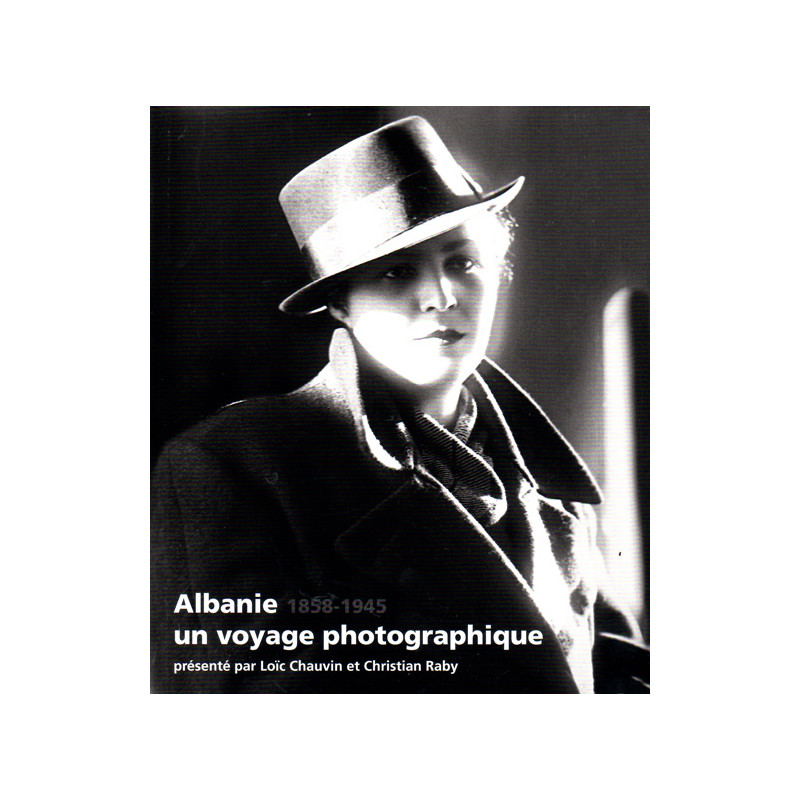- Out-of-Stock




It is this golden age, from 1858 and the first Albanian photograph, to the end of the 1940s, which we will retrace in these pages. Albania possesses a photographic legacy which, though unique among the Balkans, has gone unnoticed both inside and outside its borders. Most images presented in this book have never before been the subject of exhibition or publication.

Security policy (edit with Customer reassurance module)

Delivery policy (edit with Customer reassurance module)

Return policy (edit with Customer reassurance module)
Title: Albania, un voyage photographique 1858 – 1945
Original: Albania, un voyage photographique 1858 – 1945
Category: Fine arts, Photography
Author: Loic Chauvin, Christian Raby
Albanian translator: David Pickering, Elise Biggers
Publisher: Ecrits de Lumiere
Year: 2011
Pgs. 128
Weight: 0.331 kg
ISBN: 978-2-9538669-0-2
Albania a photographic journey (1858-1945) edited by Loïc Chauvin et Christian Raby translated by David Pickering and Elise Biggers. Albania remains largely unrepresented in the global history of photography. Not a single name or reference attests to the many talented artists it has counted in the field. Even the exemplary Marubi dynasty is little-known.
And yet few countries can boast of having nurtured so many great photographers. From the dawn of photography, when Albania was still a part of the Ottoman Empire, to the establishment of Enver Hoxha's communist regime in 1946 in the wake of the Second World War, photography flourished in Albania.
It is this golden age, from 1858 and the first Albanian photograph, to the end of the 1940s, which we will retrace in these pages. Albania possesses a photographic legacy which, though unique among the Balkans, has gone unnoticed both inside and outside its borders. Most images presented in this book have never before been the subject of exhibition or publication.
This is the first retrospective of the Albanian history of photography which represents a dozen photographers. The hundreds of photographs selected for this book is the result of research that has been conducted over the course of many years.
This research has unearthed several thousand photographs from different photographic Albanian archives, both known and unknown. Albania remains largely unrepresented in the global history of photography.
This country possesses a photographic legacy, which, though unique among the Balkans, has gone unnoticed, both inside and outside its borders. Most images presented in this book have never before been the subject of exhibition or publication. The history of Albanian photography began with an Italian, Pietro Marubi, a Garibaldian who, fleeing repression, found refuge in Albania.
He settled in Shkodra and after taking his first photograph in 1858, opened the first photographic studio in Albania. Three generations then followed. Beggars, artisans, intellectuals, politicians, and even the court of King Zog...the entire Albanian society was striking a tireless pose tirelessly in front of the camera lens.
Over the course of almost a century, the Marubi have accumulated over 120 000 negatives. In 1995, Loic Chauvin dedicated his first book, published by Arthaud, to this dynasty of photographers. But Albanian photography cannot be resumed by only one family of photographers.
Dozens of other artists have been working in Albania from the late nineteenth to the early twentieth century. The photographic collections show the political, cultural, social and religious Albania at the turn of the period; from the end of the Ottoman Empire to the hard-won independence. It may be noted specifically that, in a country where three confessions coexist, funeral pictures became a true rite of photography.
This book aims to explore this photographic richness that has been ignored to date and provide a different image of Albania than what has been conveyed by the usual clichés.
Short guide in Albanian on how to order books in 4 easy steps
Download (292.13KB)
Publisher: Logos A
Publisher: Te tjere
Publisher: Zenit Editions
Publisher: UET Press
Publisher: Fenix
Publisher: Zenit Editions
Publisher: Fishta
Publisher: Dituria
Publisher: Fishta
Reference: SKU001713
Publisher: Te tjere
Reference: SKU001771
Publisher: Dituria

It is this golden age, from 1858 and the first Albanian photograph, to the end of the 1940s, which we will retrace in these pages. Albania possesses a photographic legacy which, though unique among the Balkans, has gone unnoticed both inside and outside its borders. Most images presented in this book have never before been the subject of exhibition or publication.
check_circle
check_circle